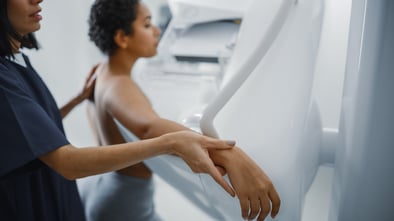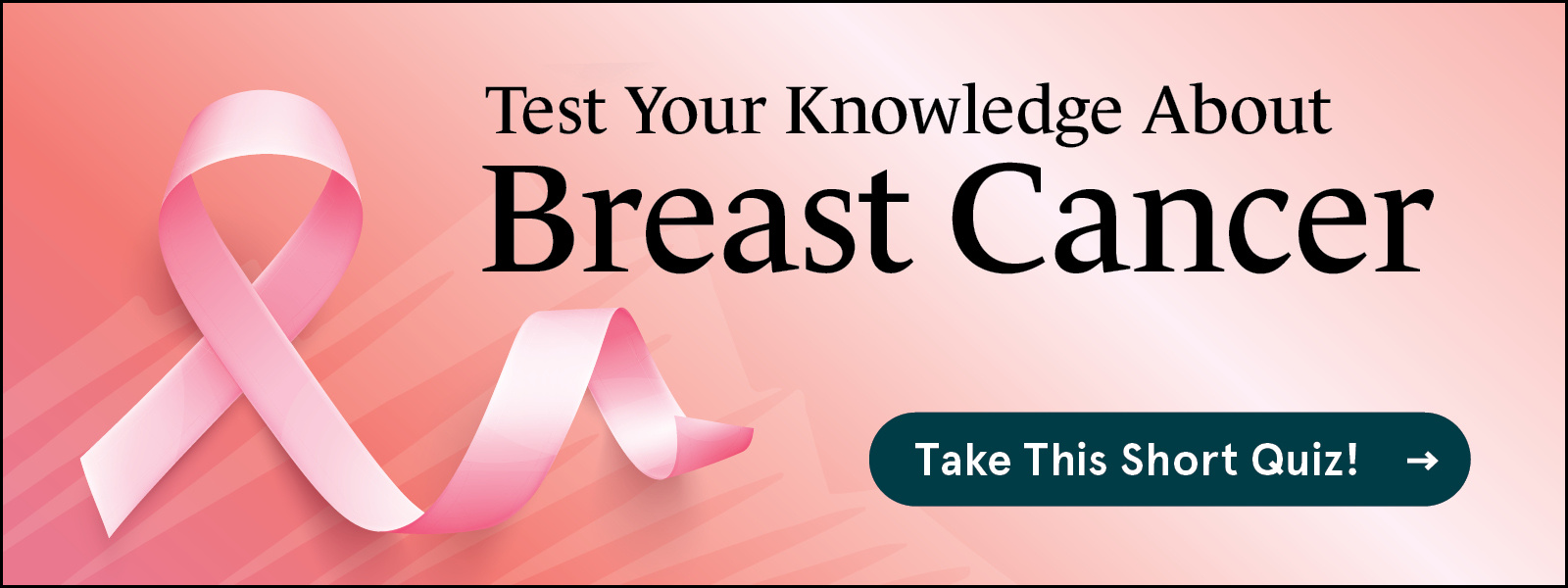5 Things You Need to Know About Your Breasts and Self-Exams
6 min read

What do you think about when someone asks if you’ve been screened for breast cancer? Is it a breast exam by a physician? Is it a mammogram? How about a breast self-exam?
As recently as a decade ago, health experts recommended a three-part approach to detecting breast cancer: performing a monthly breast self-exam, getting an annual clinical breast exam from a medical provider, and an annual or biannual mammogram for women ages 40 and older.
However, those guidelines changed after research showed that women who perform monthly breast self-exams were no more likely to discover breast cancer than those who didn’t. In fact, those who checked their breasts regularly were also more likely to undergo unnecessary follow-up testing.
While the American Cancer Society recommends a mammogram as the primary breast cancer screening method starting at age 40 for women at average risk, breast exams are still an important part of maintaining your health, and potentially detecting breast cancer.
Read more about breast cancer screening.
Let’s take a look at what you can do to become familiar with your own breasts.
1. Know What’s Normal for You
Every woman should be familiar with her breasts and what’s normal. That way, if there are changes, you can talk to your doctor about them and create a plan for finding the cause.
While the goal of a mammogram is to identify breast cancer before it causes symptoms, like a lump that can be felt, there are many cases where a woman finds a lump or notices other symptoms during a self-exam or in the course of regular daily activities like dressing or taking a shower.
“It’s important to know the landscape of our bodies, and if you have lumpy, bumpy breasts, know what that feels like,” said Dr. Mabel Mardones, breast medical oncologist and hematologist at Rocky Mountain Breast Specialists (RMBS). “After performing breast self-exams regularly, if something is abnormal, you’ll know it. If anything doesn’t seem right, get it checked out. Especially if you know you are at high risk of breast cancer, every six months get a clinical breast exam and provider consult.”
2. Know How to Perform a Breast Self-Exam
 The basics of a breast self-exam are simple: You want to physically touch and visually inspect your breasts every so often so that you know what’s normal and what’s not.
The basics of a breast self-exam are simple: You want to physically touch and visually inspect your breasts every so often so that you know what’s normal and what’s not.
“Use the pads of your fingers,” Dr. Mardones said. “Fingertips have a lot more nerve endings. When you do breast self-exams on your back, it pulls your breast tissue over the ribcage. Do either corn rows up and down the breast tissue or start on the nipple and work in a spiral outward. Remember to examine the breast tissue on the lateral side [away from the center] of the torso and feel the lymph nodes in the underarms.”
Follow these four steps for examining your breasts:
- First, stand in front of a mirror and take a good look at your breasts. Place your arms on your hips and look for anything abnormal, such as dimples, puckers, and other changes on the skin. Look for changes in the nipple such as inversion (turned inward), redness, a rash, or swelling. Then gently squeeze the nipple and check for discharge.
- Next, with your arms raised above your head, take another look, examining your breasts for the same abnormalities listed above.
- Now lie down and feel for breast lumps. Place one hand behind your head. Using the pads of the pointer and middle fingers on your opposite hand (your left hand when feeling the right breast, for example), press down and move your fingers in a circular motion. Continue this process over the entire breast, from your armpit to the center of your chest muscles. A breast lump will usually feel noticeably harder and more solid under your fingers than other breast tissue and can vary in size. Put your left arm behind your head and repeat the process using your right hand to examine the left breast.
- Finally, feel your breasts for lumps while standing up. Use the same circular movement across each breast, as you did in step 3.
While breast self-exams are not a standard breast cancer screening tool, there is still great value in being familiar with how your breasts look and feel to help you identify changes that you can discuss with your doctor.
3. Know What Your Breasts Feel Like at Various Times of the Month
If you still get your period, it’s important to perform the breast self-exam process described above at different times during the month to get to know your breasts and what’s normal for you. Breast tissue changes how it feels during your menstrual cycle. For example, it’s normal for breasts to swell and become tender in the week or two prior to your period due to fluctuating estrogen levels.
“Generally, cancerous masses are hard and tend to be fixed. They’re not tender. If the mass is tender and moving and/or soft and spongy, it’s probably a non-cancerous condition. But, get checked if you find something. Cancer usually can be leggy and fixed to surrounding tissue, not tender or mobile, but it can present in various ways,” Dr. Mardones said. “If you have had breast cancer, it’s good to be mindful of what’s normal for your reconstructed breast.”
4. Have Dense Breast Tissue? See How Self-Exams are Different
It can be difficult for any woman to spot changes during a breast self-exam, but it’s especially challenging for women with dense breasts. That’s because dense breasts have a larger percentage of fibrous and glandular tissue than fatty tissue. As much as half of American women have breasts that are either “dense” or “extremely dense” throughout.
Dense breasts are more common in younger women, those who take hormone replacement therapy (HRT), women who are pregnant or breastfeeding, and those with low body weight.
“Dense breast tissue can make it challenging to identify an abnormal mass because the breasts normally feel lumpy and bumpy,” Dr. Mardones said. “But by knowing what’s normal you’ll be able to get checked if something feels unusual.”
Try to get a baseline of what your breasts normally feel like with the lumpy or harder areas so that you can recognize something new that may appear.
5. Remember: Breast Self-Exams Are Not a Substitute for Mammograms
 Knowing how your breasts normally look and feel is a great first step toward protecting your breast health. But regular mammograms are the gold standard for finding breast cancer in its earliest stages -- before it can be felt. Don’t skip your mammogram if you’ve reached the age when your doctor recommends you start them.
Knowing how your breasts normally look and feel is a great first step toward protecting your breast health. But regular mammograms are the gold standard for finding breast cancer in its earliest stages -- before it can be felt. Don’t skip your mammogram if you’ve reached the age when your doctor recommends you start them.
Mammograms are a specialized type of X-ray that provide detailed images of the breast to identify suspicious tissue. Quickly compressed between clear plates, the breast tissue spreads to improve the image.
Read more: Preparing for Your First Mammogram
“Mammograms provide a different view – a 2D and 3D radiologic evaluation,” Dr. Mardones said. “This screening offers a peek inside. We can see the architecture of the breast tissue and whether there is asymmetry or calcium deposits that you’ll never feel. There are a lot of physical indicators of abnormalities behind the scenes beyond what we can find with regular breast exams, which is why an annual mammogram is so important.”
You should talk to your gynecologist or primary care provider by age 30 about the right breast cancer screening schedule for you. And remember, if you notice something – say something. Don’t wait. Knowing what’s normal for you can save your life.

